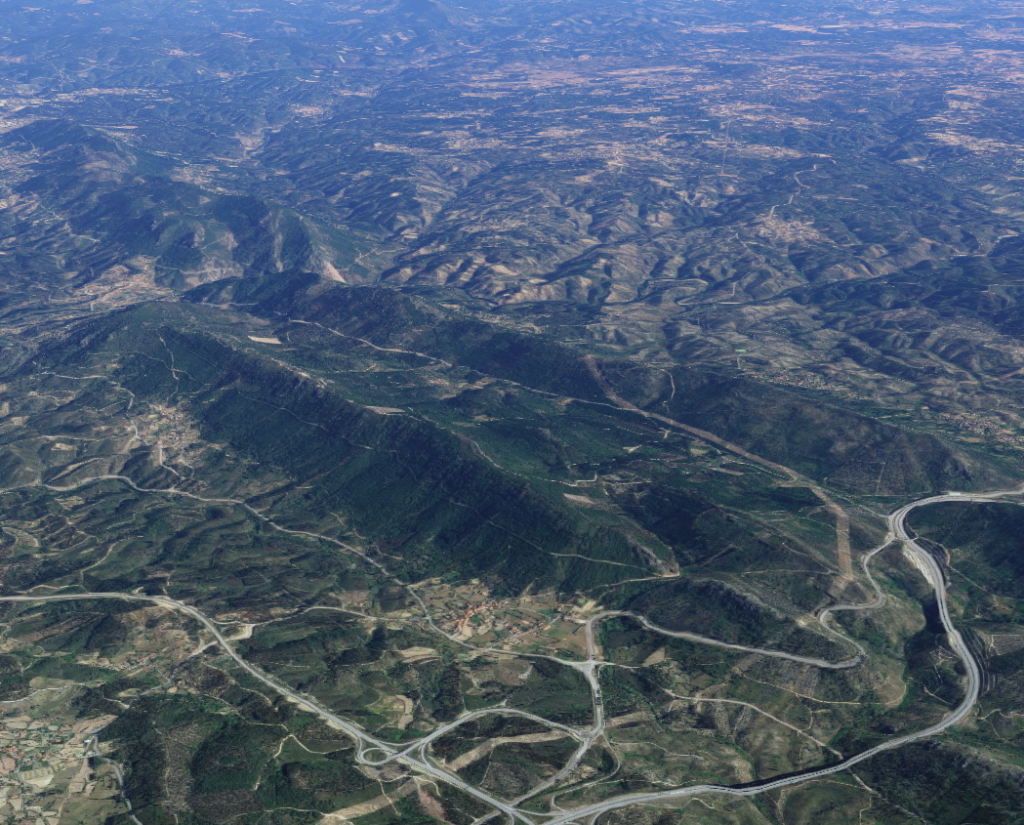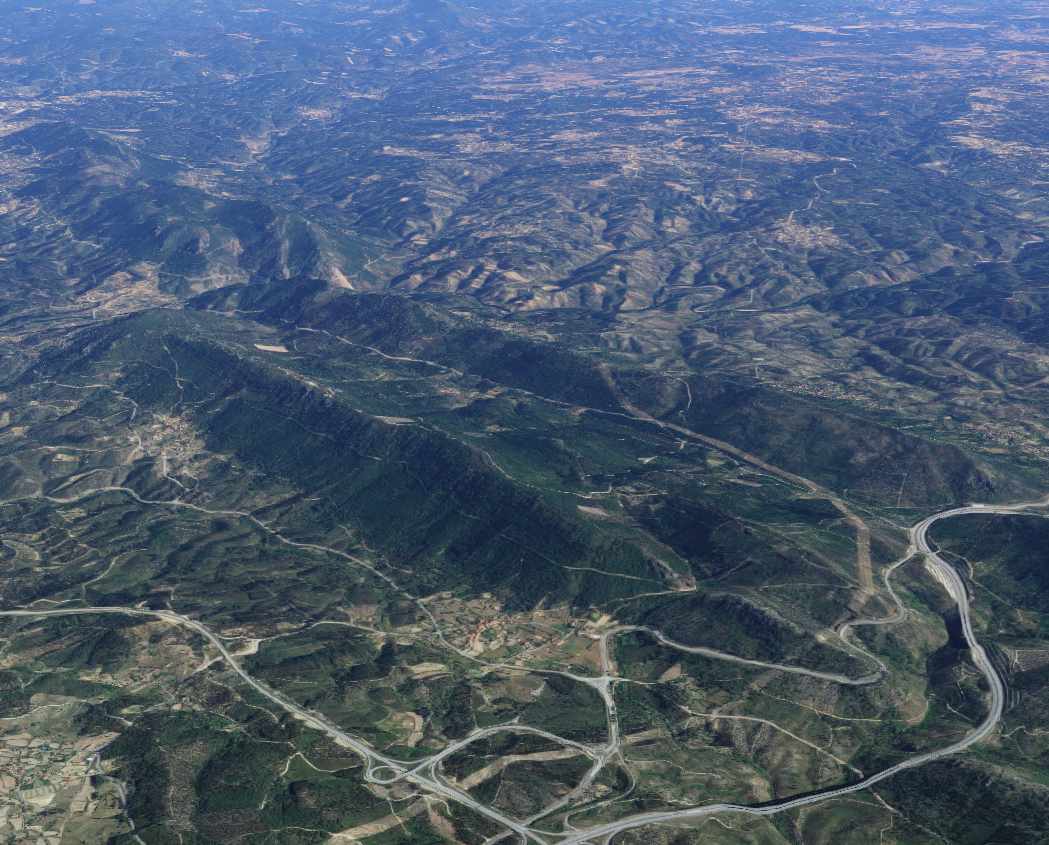Financing program: Advanced Computing Projects via Advanced Computing Portuguese Network (Projetos de Computação Avançada disponibilizados através dos recursos computacionais da RNCA — Rede Nacional de Computação Avançada (In Portuguese)
Project N.: CPCA/A2/6046/2020,
Keywords Mountain flows; Wind energy; Stratified flows; Forest flows; Computational Fluid Dynamics;
Brief description
Serra do Perdigão, in Vila Velha de Ródão municipality (Portugal), is comprised of two 250 m height parallel ridges (Fig. 1), 1.4 km apart, spanning about 4 km from south-east to north-west.
Wind flow in the Perdigão region is characterised by a strong daily cycle and highly unsteady complex interaction of flow separation, forest canopy drag and thermal stratification.

Our objective is to model this flow for 24h starting at 18h on the 14th of May 2017. The software employed for the purpose is VENTOS®/M, an atmospheric flow simulation code featuring the appropriate physics modelling capabilities, but that requires considerable computational resources and input data to reproduce flow behaviour adequately.
Access to a larger HPC cluster provides the chance to test the software’s performance with a larger thread count and various node/core configurations. The higher targeted simulation complexity leads to additional demand in computational resources. After optimising configurations for speed or efficiency, a more powerful system (compared to UPORTO’s) allows both to reduce the turnaround time and release our resources for less demanding tasks.
Comparatively to existing model results, increased temporal and spatial resolution and surface cover will reveal more complex flow phenomena near the ground. The simulation results should provide insights into multiple areas of interest, such as wind energy, micro-meteorology, mountain flows and forest fires. These are results obtained on smaller computer systems than those available at UC-LCA, which give a glimpse of what is expected from running higher performance and larger computer systems such as Navigator.
The figure shows the different flow patterns obtained via two mesh resolutions (20 versus 40 m) at 18:35 UTC. For observation of the flow dynamics during the 24 hours in May 2017, click here (LINK).

By performing scalability tests of the MPI-parallelised VENTOS®/M code on the Navigator+ HPC, the most optimal configuration for a case of elevated complexity (20-m resolution) was obtained: using 256 processes using 2 virtual cores per process. For a run of such elevated spatial complexity, covering 24 (plus 18 for start-up) hours of simulated time, the improvements were clear: runs that on limited HPC resources (32 processes) took over 3 months of wall-clock time to simulate would now, based on estimates from the performed scalability tests (using a case of similar complexity), require approximately 13.5 days (325 hours), that is, an almost 7-fold reduction in wall-clock time.
